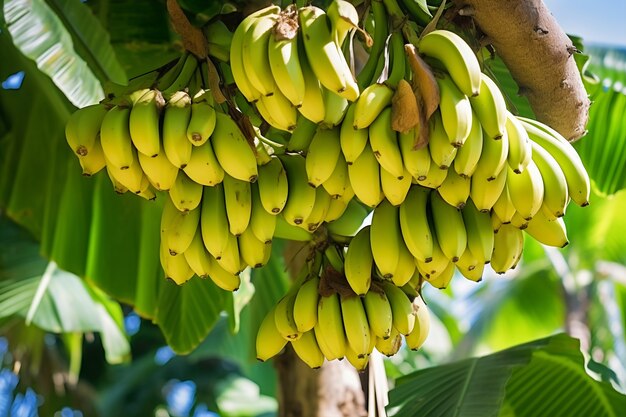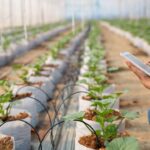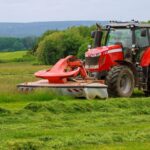Bananas are one of South Africa’s most significant agricultural commodities, contributing to both domestic consumption and export markets. With favorable climatic conditions and fertile soils in regions such as KwaZulu-Natal and Mpumalanga, banana farming presents ample opportunities for growers to enhance quality and yield. Implementing effective techniques and best practices can help banana farmers maximize productivity, improve fruit quality, and increase profitability. Here are some strategies for enhancing quality and yield in banana farming in South Africa:
- Site Selection and Preparation:
Choosing the right location and preparing the soil are crucial steps in banana farming. Select sites with well-draining soils, adequate sunlight, and protection from strong winds. Conduct soil tests to assess nutrient levels and pH balance, and amend the soil as needed to optimize growing conditions for bananas. - Variety Selection:
Selecting the appropriate banana variety is essential for achieving desired quality and yield. Consider factors such as market demand, disease resistance, and climatic suitability when choosing banana cultivars. Popular varieties grown in South Africa include Cavendish, Williams, Grand Nain, and Lady Finger. - Optimized Planting Techniques:
Adopting proper planting techniques is essential for establishing healthy banana plants. Planting should be done during the optimal season, typically in spring or early summer, to ensure favorable growing conditions. Maintain proper spacing between plants and rows to promote airflow and minimize competition for resources. - Fertilization and Nutrient Management:
Implementing a balanced fertilization program is essential for supporting healthy growth and maximizing yield. Regularly monitor soil nutrient levels and apply fertilizers based on plant requirements. Pay attention to macronutrients such as nitrogen, phosphorus, and potassium, as well as micronutrients like magnesium, calcium, and zinc. - Irrigation Management:
Efficient irrigation management is critical for ensuring adequate moisture levels and promoting optimal growth and fruit development. Implement drip irrigation or micro-sprinkler systems to deliver water directly to the root zone while minimizing water wastage. Monitor soil moisture regularly and adjust irrigation schedules as needed based on weather conditions and plant requirements. - Pest and Disease Control:
Implement integrated pest management (IPM) practices to control pests and diseases effectively while minimizing reliance on chemical pesticides. Monitor banana plants regularly for signs of pests, such as banana weevils, nematodes, and aphids, as well as diseases like Panama disease and black Sigatoka. Utilize cultural practices, biological controls, and resistant varieties to manage pest and disease pressure sustainably. - Pruning and Canopy Management:
Proper pruning and canopy management are essential for optimizing light penetration, airflow, and fruit production in banana plants. Remove old or diseased leaves regularly to prevent the spread of diseases and promote the development of healthy new growth. Thin out excess suckers to maintain an optimal number of plants per mat and improve fruit quality. - Fruit Thinning and Bunch Management:
Thinning fruit bunches is necessary to ensure uniform fruit size, reduce competition among developing fruits, and prevent overloading of the plant. Remove excess hands or fingers from fruit bunches during early stages of development to promote larger, higher-quality fruits. Implement bunch covering or bagging techniques to protect fruit from pests, sunburn, and physical damage. - Harvesting and Post-Harvest Handling:
Timing of harvest is crucial for achieving optimal fruit quality and shelf life. Harvest bananas when they reach the desired stage of ripeness and firmness, typically when the fruit has attained full size and color but is still slightly green. Handle bananas carefully during harvest to minimize bruising and damage, and promptly cool and transport harvested fruit to maintain freshness and extend shelf life. - Continuous Monitoring and Evaluation:
Regular monitoring and evaluation of farm practices, crop performance, and yield metrics are essential for identifying areas of improvement and implementing corrective measures. Keep detailed records of agronomic inputs, pest and disease occurrences, harvest yields, and post-harvest losses to track progress and make informed decisions for future crop management.
By incorporating these techniques and best practices into their farming operations, banana growers in South Africa can enhance quality and yield, improve profitability, and sustainably meet the growing demand for high-quality bananas in domestic and export markets. Continued investment in research, innovation, and extension services is essential for supporting the development of the banana industry and ensuring its long-term viability and success.







